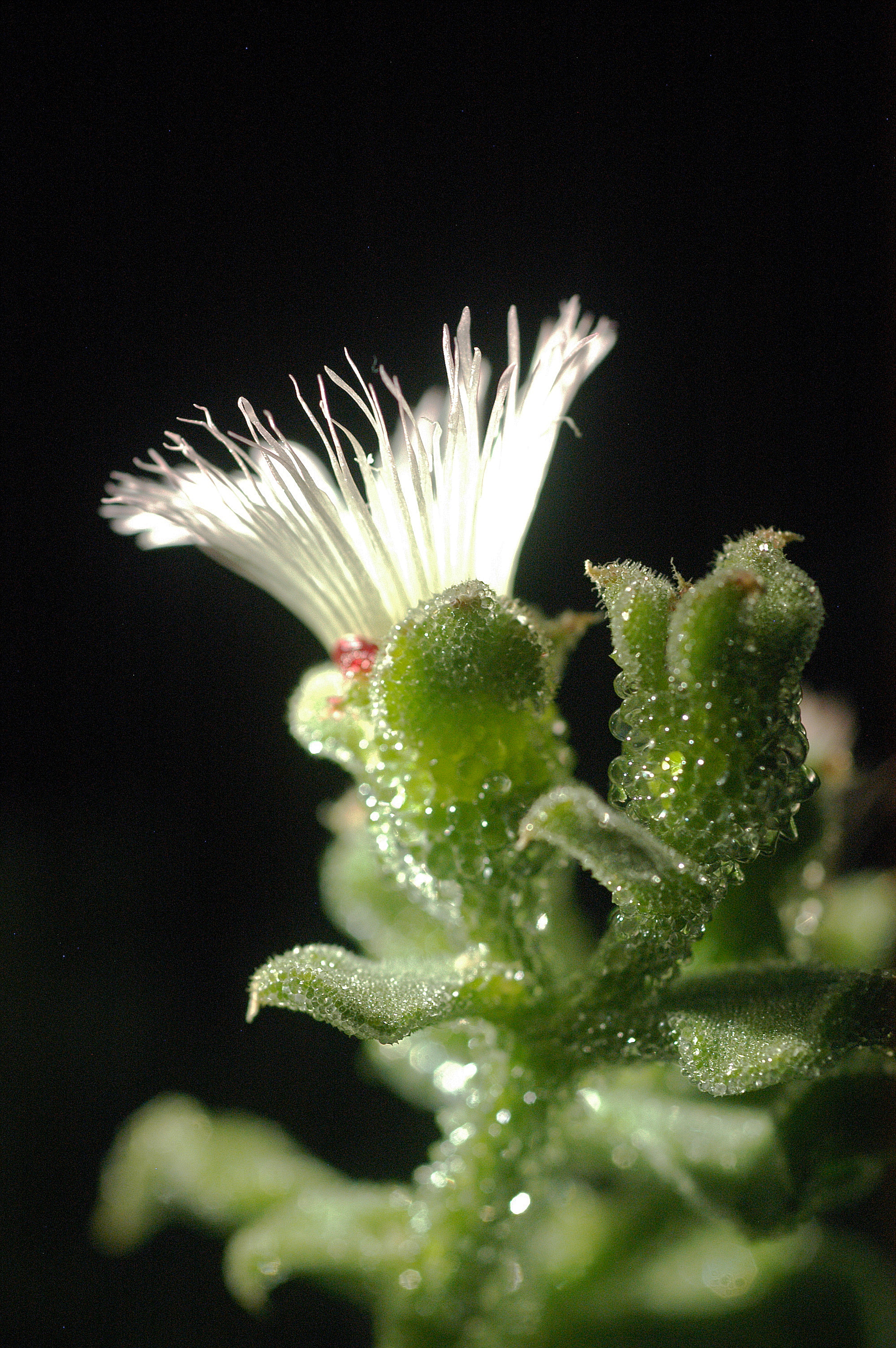
The role of the Ice Plant epidermal bladder cells becomes crystal clear?
The Ice Plant (Mesembryanthemum crystallinum) is a highly salt tolerant plant native to South Africa but now naturalized worldwide. This succulent perennial gets its name from the remarkable cells that line the aerial surface of the plant, that reflect the light and sparkle like ice crystals in the sun. These cells, known as epidermal bladder cells (EBC), are modified trichomes, the hair-like structures found on leaves of most plants, but on the Ice Plant they look more like water filled balloons (see SEM image, below) than the hairs we know from leaves of plants like tomato or the fibers of cotton seeds.

A Model for Salt Stress Adaptation
While working on my Ph.D. in the Department of Botany at the University of Toronto, I became fascinated not only by this plant’s beauty, but also by its ability to change metabolism from C3 metabolism to Crassulacean acid metabolism (CAM) when salt stressed. This adaptive feature allows the plant to conserve water during times of drought or high salinity by reducing daytime transpiration. This is accomplished by taking up carbon dioxide during the night and storing it in the form of organic acids for remobilization the next day for photosynthesis.
New Insights into EBC Function
Recent work in my lab at Southern Cross University, in collaboration with groups at Louisiana State University and UNAM, Mexico, has focused on elucidating the role of the EBC on the Ice Plant using single-cell type analysis and Omics technologies. We developed a high-throughput technique for extracting the contents of the cells, allowing us unique insight into the cellular content. It has been known for a long time that EBC function to store sodium and are thought to be one of the principal factors for salt tolerance of the plants; however as these cells are also found on the plants when they are not salt-stressed, it was postulated that they must have other roles.
Our studies of the transcriptome, metabolome, and now the proteome and ionome have painted a picture of a metabolically active cell with functioning chloroplasts that, like the underlying leaf mesophyll cells, are active in CAM. These cells also show molecular features related to herbivore defense, and as well as storing sodium accumulate large amounts of chloride ions. As we dig deeper into the biology of these cells it is clear they have an important role in the physiology of the plant.
Comments